Post researched and written by Curator of Photographs Anna Petersen
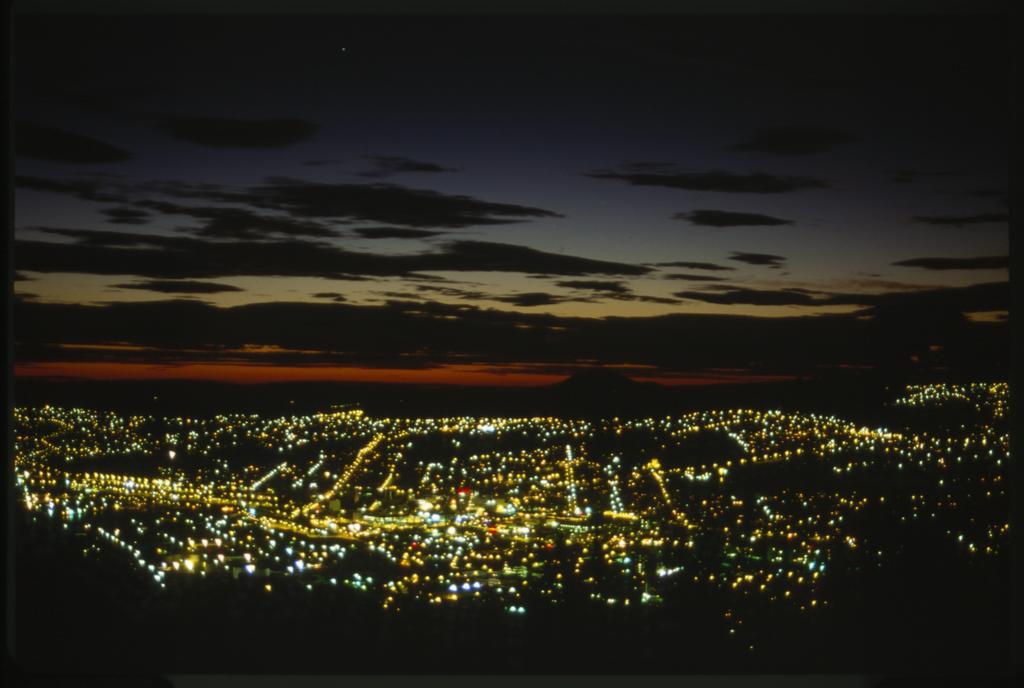
Illumination is a topical subject in Dunedin at present as the City Council continues to roll out the new LED lights, designed to cut down on energy consumption and enhance our night sky. As we also enter the season of light, it seems a good time to make a quick survey of what the Hocken Photographs Collection has to offer as evidence of the different technologies used to light our way over the years and decorate the main business district.
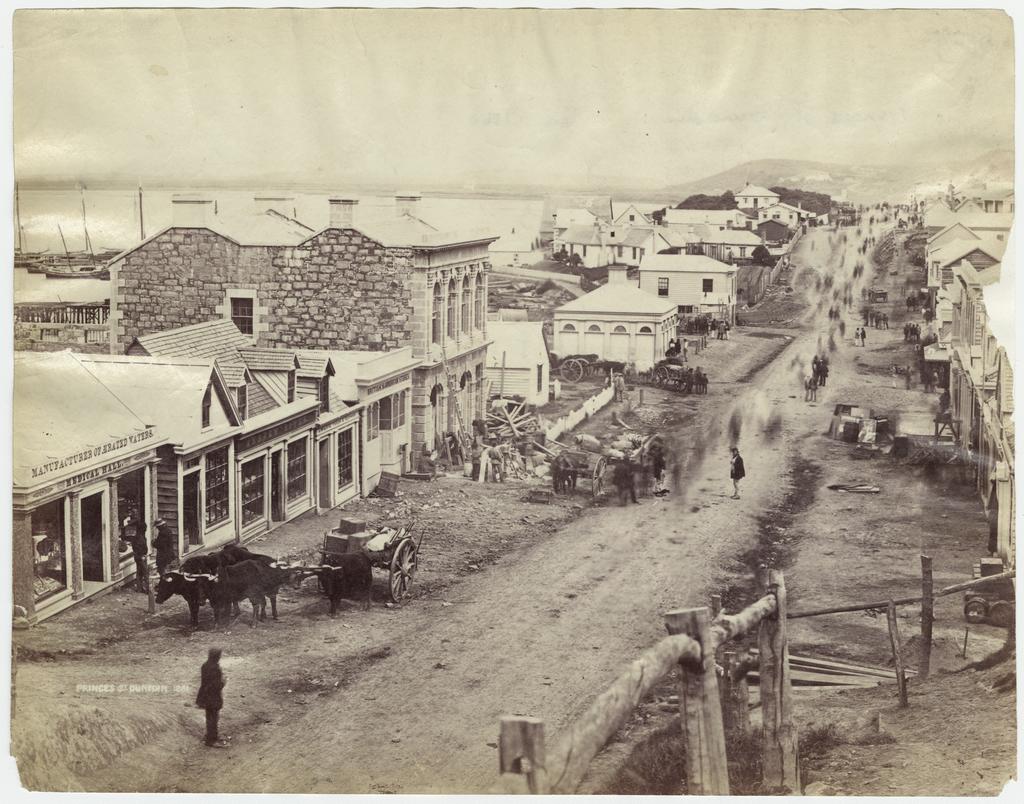
Looking back at the earliest images of our streets, dated between 1860-1861, it is not hard to imagine that in the beginning it must have been very dark and quite hazardous on a cloudy or moonless night. Some hotels might have had candle lanterns over the doorways, but for the most part, there were no street lights. Even in the daytime, the first roads were dangerously uneven, with potholes and drainage ditches.[1] A photograph of the main street taken c.1861 reveals how the road basically doubled as the footpath.
The early 1860s saw a period of rapid expansion, however, made possible through the formation of Dunedin Gas Light and Coke Company in mid-1862 and new-found civic revenue from the gold rush.[2]
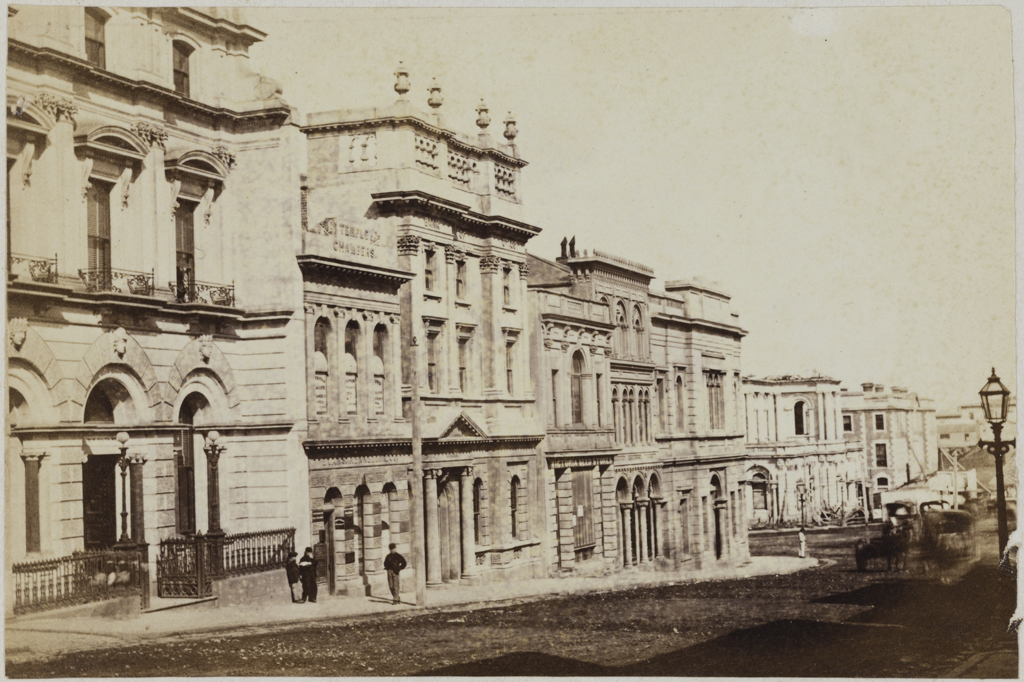
By September 1863, pipes from the new gasworks in South Dunedin fed 150 gas lamps along Princes, George and Stuart streets, beside purpose-built footpaths.[3] This development made Dunedin the first settlement in New Zealand to have central city street lighting.
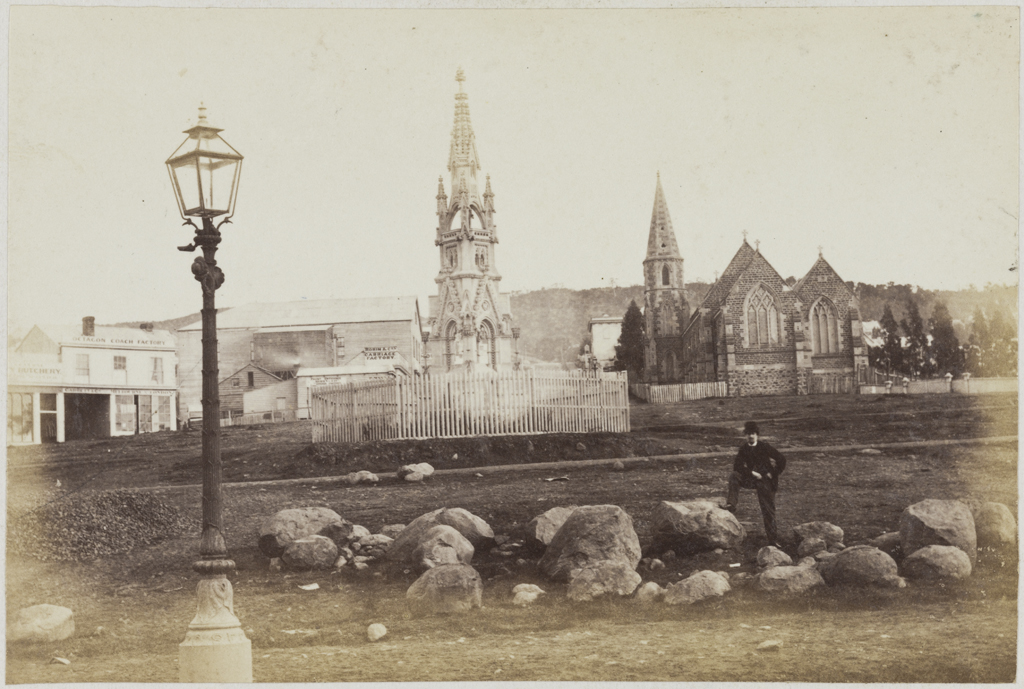
Yet, of course, Dunedin was still a very small place in the great scheme of things and new technological advances continued overseas. Thomas Edison patented the first commercially viable electric light bulb in 1878 and even as Dunedin’s public gas lights were being extended to the suburbs of Caversham, Mornington, Roslyn and St Kilda in 1882, major businesses like the Roslyn Woollen Mills were beginning to adopt electric lights on their premises.[4] An Otago Daily Times (ODT) newspaper report about this advance at the Mill in 1885 noted the different quality of light that electricity generated. ‘The first thing that attracted attention was the steadiness and brilliancy of the light as compared with the old system of lighting with kerosene lamps, which has been in vogue for the five years during which the mills have been working night and day.’[5]
By the turn of the century, electric light bulbs had become an important form of decoration and source of illumination, emitted through shop and office windows in the downtown area. Evidently, when the Duke and Duchess of York visited in 1901, ‘there was scarcely a shop or office [on Princes Street] that did not help to swell the general brightness of the street in the evening.’[6] The Council briefly set up a dynamo driven by a traction engine to power light bulbs decorating the Town Hall and welcome arches in the Octagon, making it ‘a scene of great beauty’.[7]
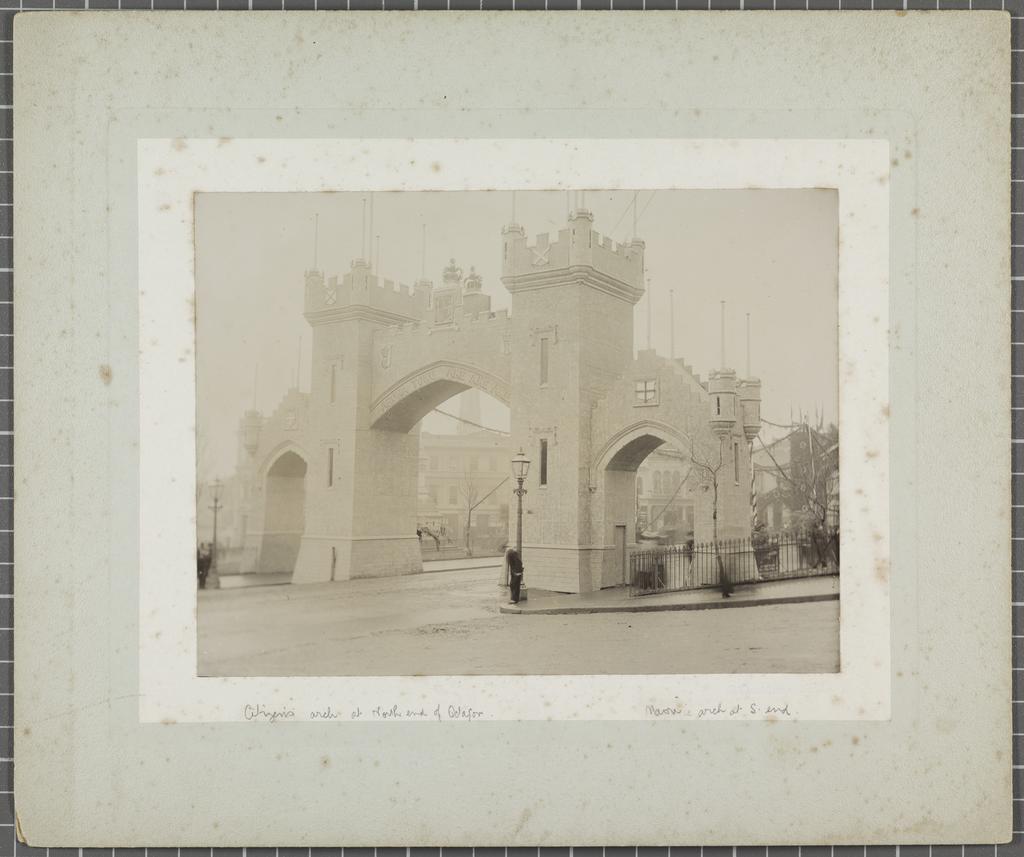
As evidence mounted to suggest electricity was the way of the future, the idea of funding the replacement of the public gas lights nevertheless met with some resistance. In one heated letter to the editor of the ODT, J. Watt, a gas engineer in Balclutha, wrote ‘… We have been told times without number that great things have been done in America and elsewhere. We don’t want to know what has been done in America or anywhere else… Electric light may be the coming light, but I think those who are likely to use it are entitled to know what it will cost before it does come, and not to be asked to assist in buying a pig in a poke…’.[8] Mr Watt had done the sums for operating 16, 20 or 25 lights at 70 candle-power (i.e. roughly 880 lumens). He calculated the expense comparing other places in New Zealand like Gore, Patea and Stratford, where electric lights had been operating for some years at a rate of seven pence a unit, and found the gas lights in Balclutha operated at not much more than a fourth of the cost.
Concerns were also raised by citizens about the safety of electrical cables, yet there was no halting the global trend towards the adoption of electricity and ten arc lights were erected in Custom Square and along Princes Street as far as the Octagon at the end of 1904.
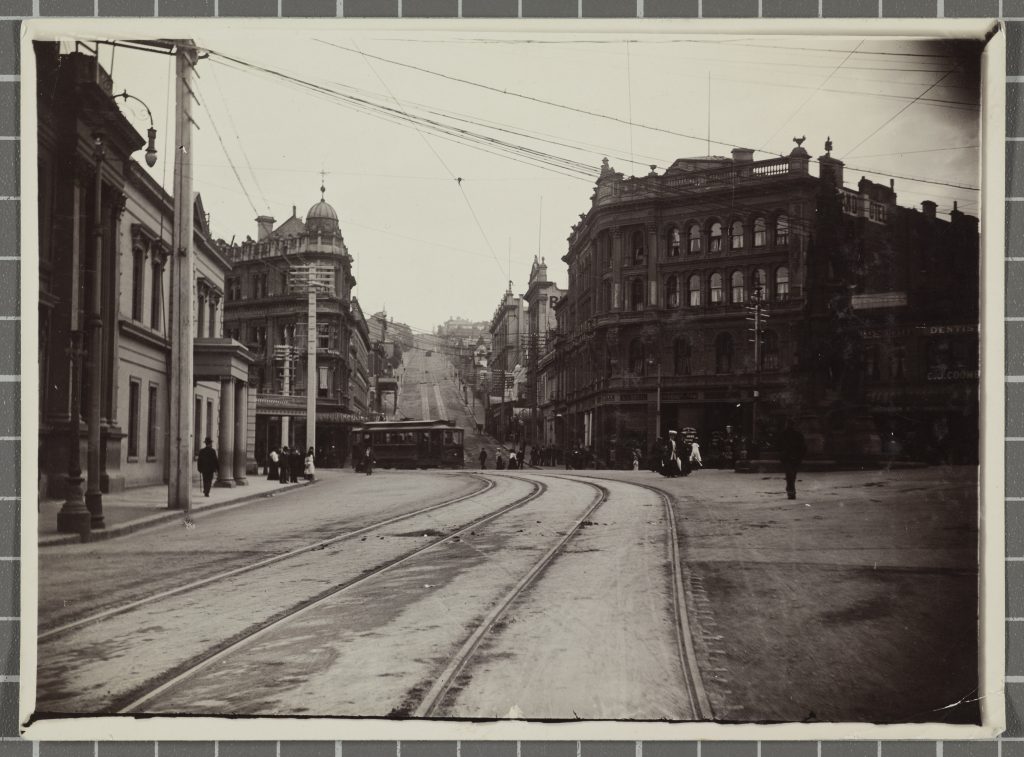
These electric bulbs, suspended from sinuous iron frameworks, connected to the electric tramlines laid down in the area a year beforehand. There was little fanfare at the time, but in a brief, untitled ODT article, the reporter described how ‘The effect was a beautiful one, and when these lights are at the maximum of 2000 candle-power each there will be no more brightly-lighted thoroughfare in New Zealand than Princes and George streets. As it was, even the white lights from the incandescent gas lamps along the streets appeared last evening but a pale, sickly yellow in comparison.’[9] The promise of more power came from plans to connect the lights to a hydro-electric station at Waipori, which happened in 1907.
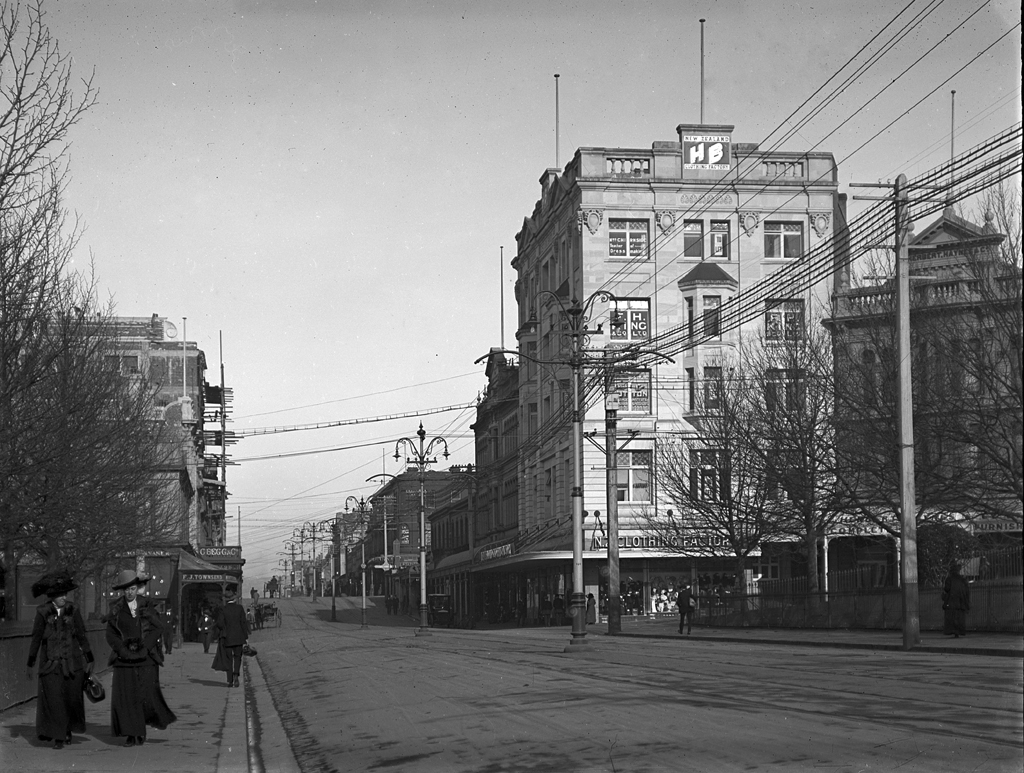
All of the photographic evidence of the street lights in Dunedin up until this point had been taken during the day. Photography itself is dependent on there being sufficient light and it was not until the 1890s that art photographers overseas began experimenting with capturing street scenes at night with the aid of artificial light.[10] We know that members of the Dunedin Photographic Society used flash bulbs for photographs of interiors in 1894, but photographers generally seem to have been slow to address the subject of night scenes here. Figure 8 is one of the earliest examples that we have. This view of decorations on the Town Hall was probably taken in May 1920, when the building was lit up for the reception of Edward, Prince of Wales. Thanks to the Waipori Power Station, Dunedin evidently provided ‘staggering illuminations, which completely eclipsed those of Christchurch.’[11]
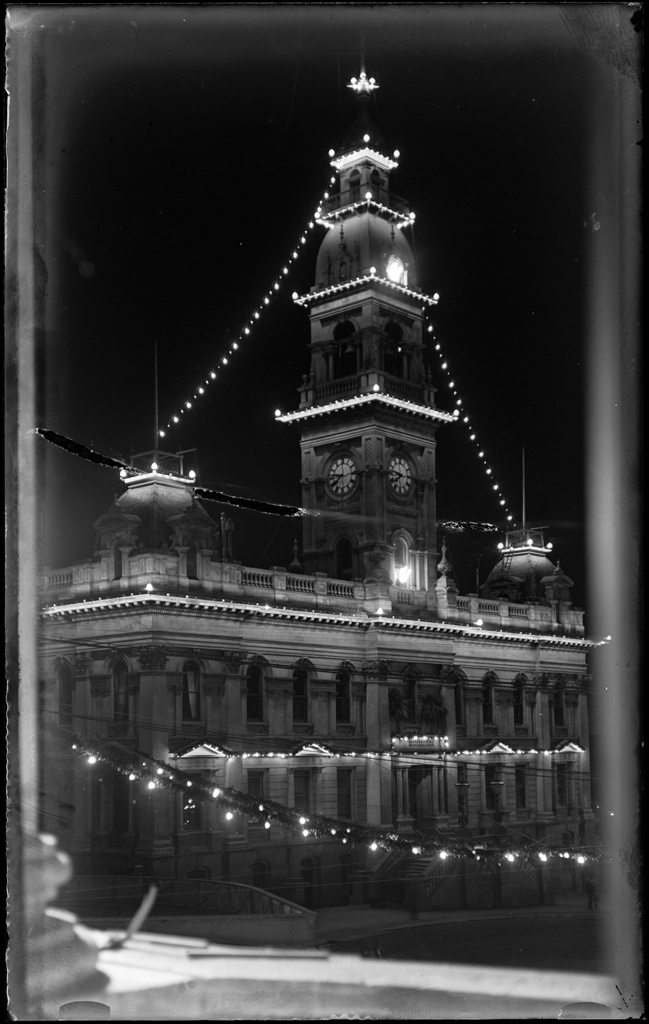
The new technologies for photographing colour (i.e. refracted light) that emerged in the twentieth century would similarly lag behind advances in coloured electric lighting. The first neon lights appeared in Dunedin in the 1920s. Jim Sullivan has described how the Arthur Barnett ‘Can’t stop’ sign of the man on a horse was created in 1930 and David Murray has written about the Barton’s signage in one of his blog posts.[12] While there were photomechanical ways of producing colour used in the manufacture of postcards of Dunedin from the early 1900s, and hand colouring was always an option, it was not until the development of Kodak’s first Kodachrome film in 1935 that people could really get into colour photography. Even then, it remained an expensive pursuit until about the 1970s. A 35mm slide taken by the much-celebrated George Chance records the decorations for another royal occasion – the Queen’s visit in 1954.
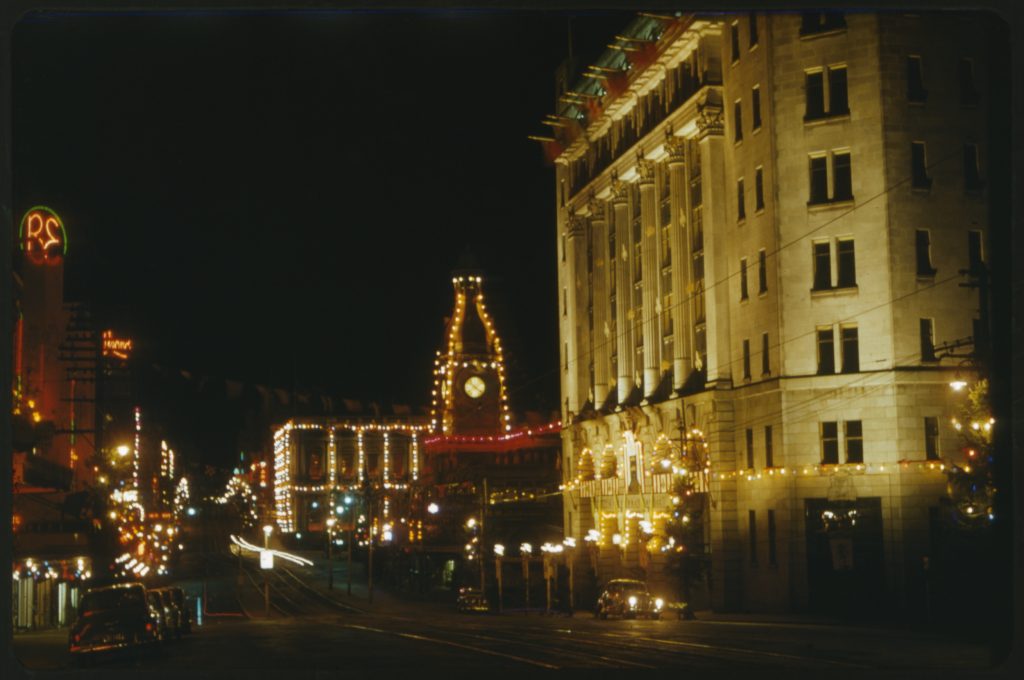
Turning finally to evidence of developments over the last 50 years, the Franz Barta studio collection of commercial negatives, includes two images of the Octagon Theatre in 1965 by night and another of unlit neon signs in the vicinity during the daytime.
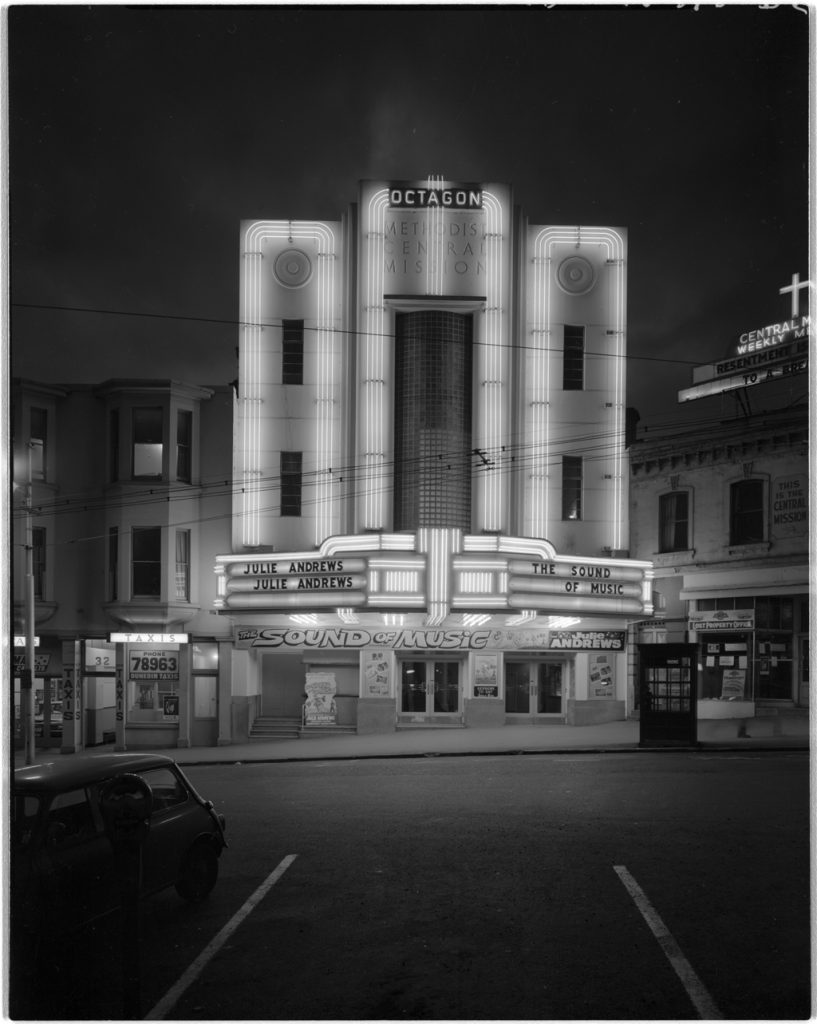
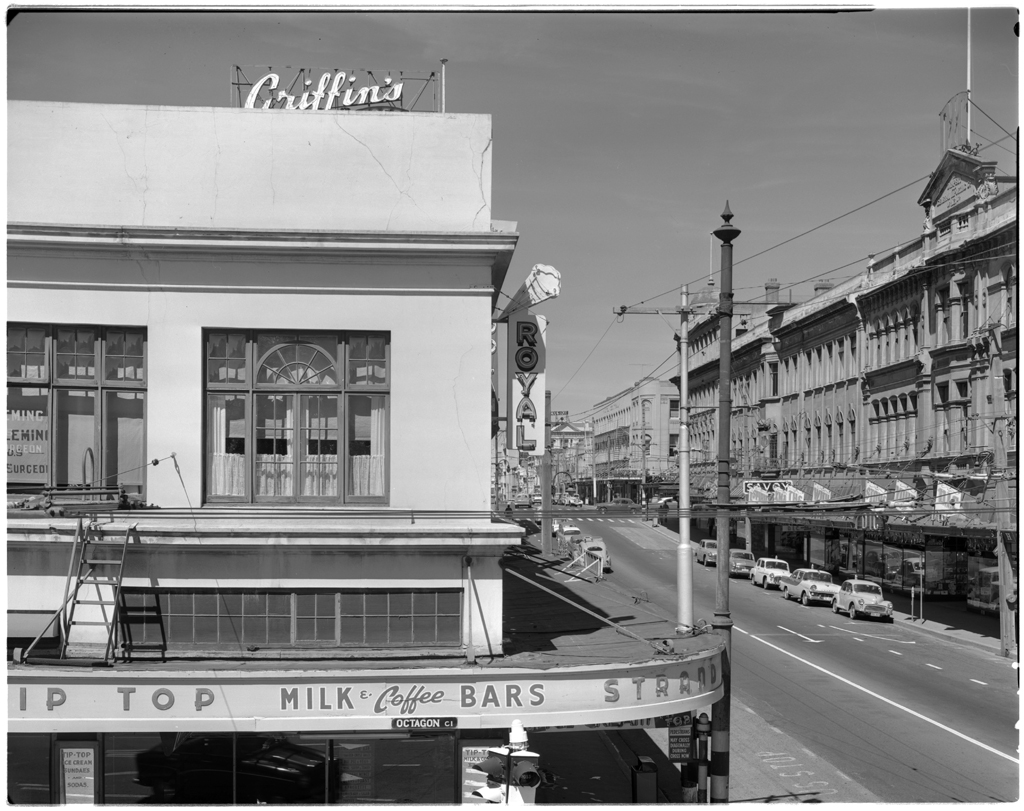
A few years on, engineer Edward Dwyer made his own private study of lighting in the central city c.1967-1970. These photographs were taken during the period before weekend trading began, when locals would go shopping on Friday night.
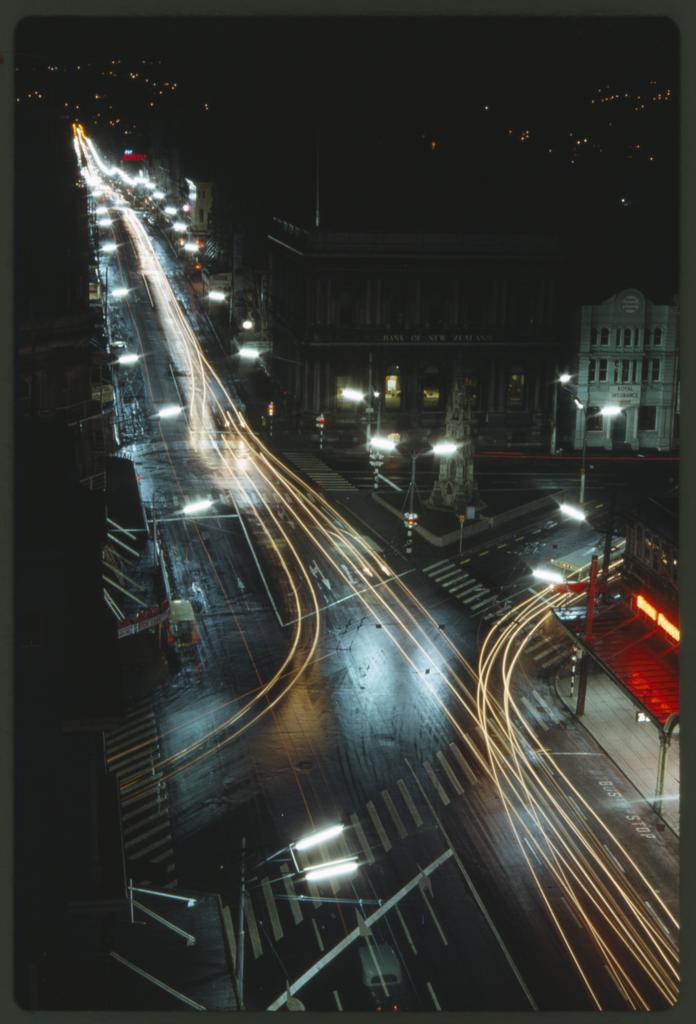
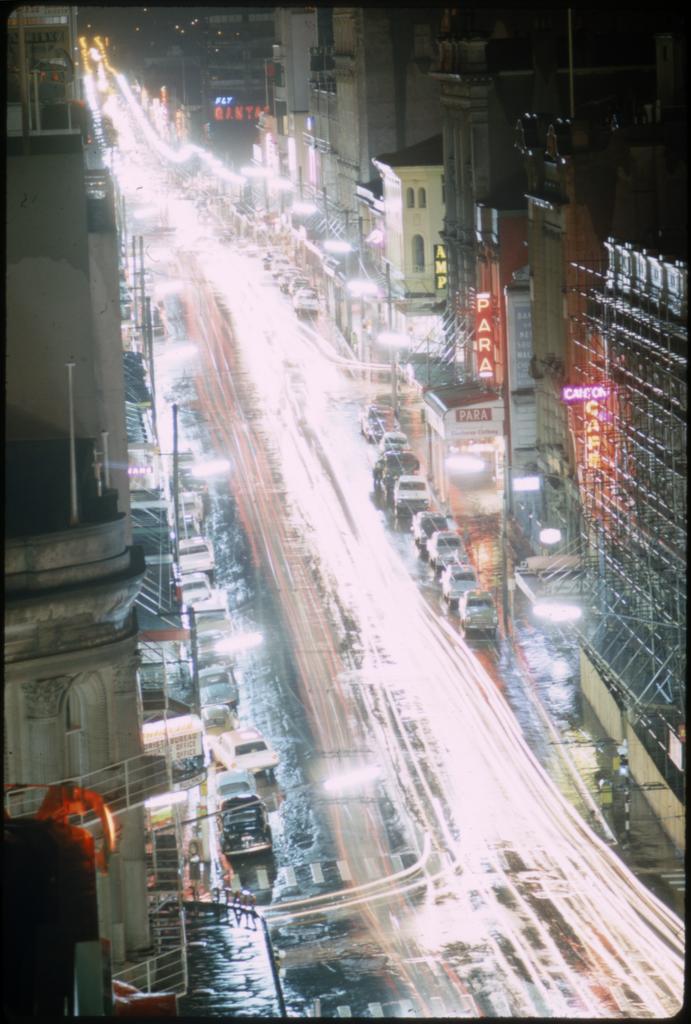
With two contrasting shots of the same area taken in the dark of early morning and evening (figures 12 and 13), one begins to see negative effects of light pollution, which has become more of a concern in recent times.
On a more positive note, another of Ed Dwyer’s photographs (figure 14), taken at dusk on George Street during Festival Week in 1970, records the Christmas candle decorations that delighted children growing up in the 1970s and captures something of the upbeat mood described in the lyrics of the popular song, ‘Downtown’, by Petula Clark (1964):
[Pre-Chorus]
Just listen to the music of the traffic in the city
Linger on the sidewalk where the neon signs are pretty
How can you lose?
The lights are much brighter there
You can forget all your troubles, forget all your cares
[Chorus]
So go downtown
Things will be great when you’re downtown
No finer place for sure, downtown
Everything’s waiting for you
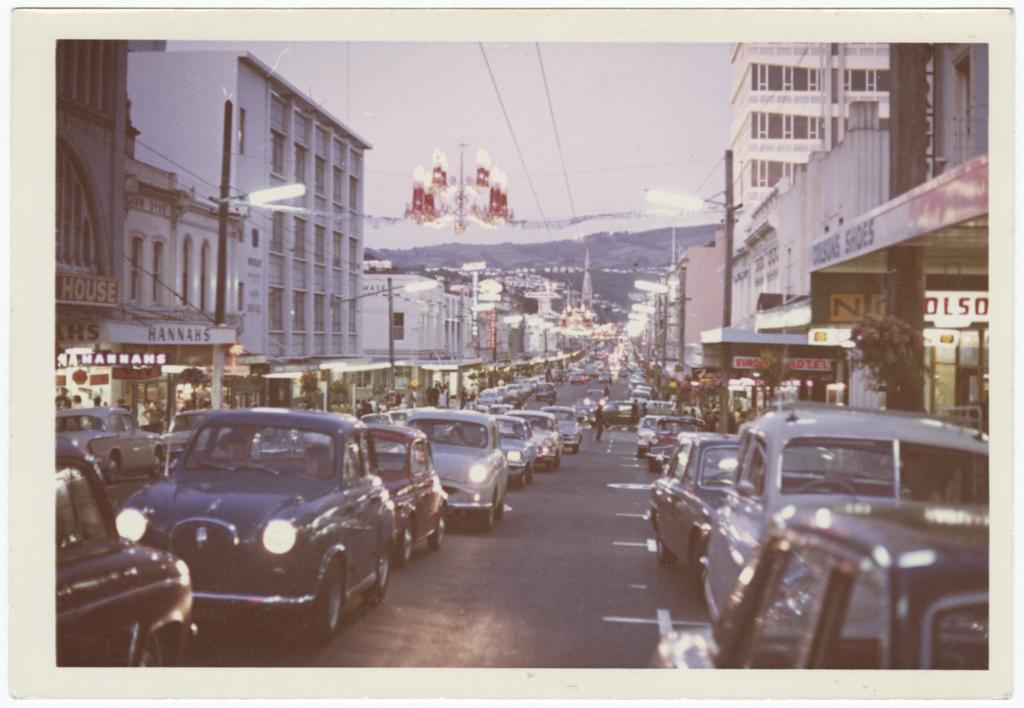
Most recently, a collection of 35mm slides taken by the late John R. Lamb and dating from the start of the new millenium, focus on neon signs and floodlit buildings around Dunedin. Clearly, by the beginning of the 21st century the city no longer needed the event of a royal visit to highlight its significant architectural heritage and express civic pride in light. The use of dramatic colour on the Town Hall continues to this day.
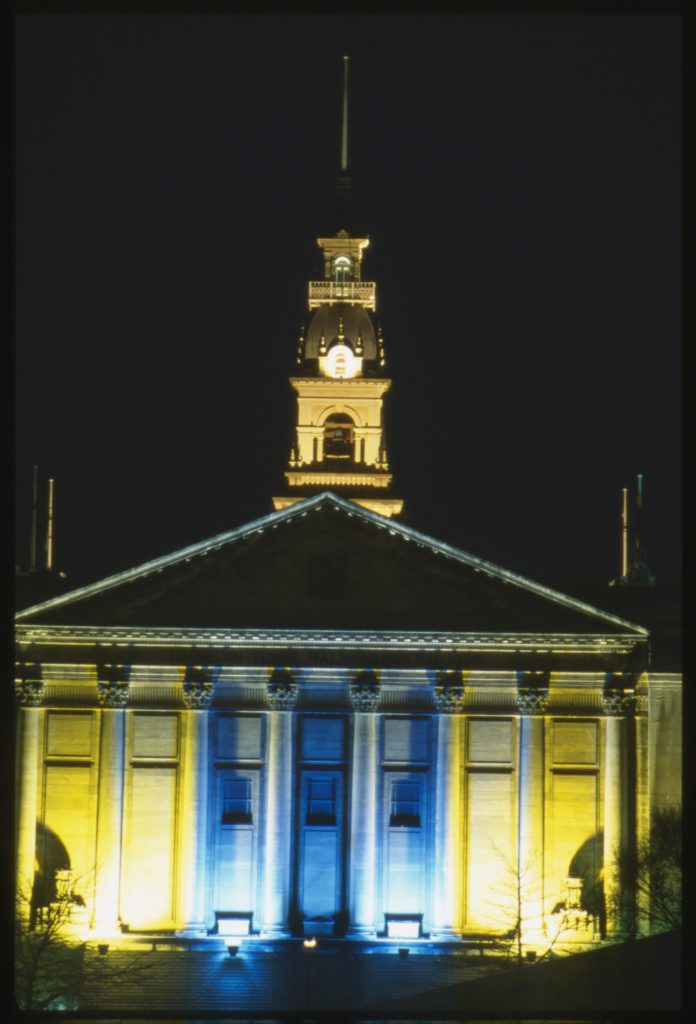
Even a brief overview of Hocken photographs focusing on lighting technology and its use in the heart of Dunedin over the last 150 years, illustrates the efforts made and resources spent over the generations to develop a safe, attractive and prosperous urban environment, and provides evidence of the enduring joy and wonder that light can bring.
[1] ‘Street lighting’, Te Ara Encyclopedia of New Zealand https://teara.govt.nz/en/streets-and-lighting/page-5 (accessed 12/6/2019).
[2] Karen Astwood, IPENZ Engineering Heritage Report, Dunedin Gasworks, 2014, pp.5-7.
[3] Ibid.
[4] Ibid.
[5] ‘The Electric Light at the Mosgiel Factory’, Otago Daily Times, 3 October 1885.
[6] ‘Decorations and Illuminations’, Otago Witness, 3 July 1901.
[7] Ibid.
[8] For example, see ‘Gas v. Electricity’, Otago Daily Times (ODT), 11 August 1904.
[9] ODT 8 November 1904.
[10] Michel Frizot, A New History of Photography, 1998, p.285.
[11] ‘The Illuminations at Dunedin’, The Mercury 20 May 1920. See also ‘The Illuminations on the Town Hall, Dunedin’, Otago Witness, 1 June 1920.
[12] Jim Sullivan, ‘Time to get Can’t Stop restarted’, Otago Daily Times, 29 January 2019, https://www.pressreader.com/new-zealand/otago-daily-times/20190129/281788515283549 (accessed 22 January 2020) and David Murray, ‘Bartons Buildings (Stafford House)’, https://builtindunedin.com/2013/08/14/bartons-buildings/ (accessed 22 January 2020).


Do you have any information (or video?) of the Big Horse “Can’t Stop” on the top of the mall? I’d love to see it glowing again
Hi Heather, if you click on the link to Jim Sullivan’s article in the Otago Daily Times from footnote 12 you will find more information on Can’t Stop.